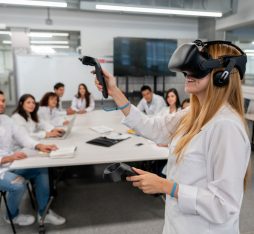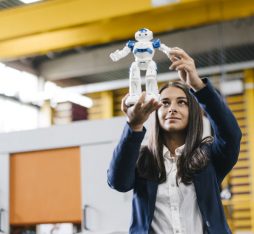- Cyber-Physical Universe
- Decisions and knowledge
- Home and Business Experiences
- Sustainable digital society
“Si tu veux construire un bateau, ne rassemble pas tes hommes et femmes pour leur donner des ordres, pour expliquer chaque détail, pour leur dire où trouver chaque chose. Si tu veux construire un bateau, fais naître dans le cœur de tes hommes et femmes le désir de la mer.” (Antoine de Saint-Exupéry)
This article was written because of need to improve quality, to strengthen the way of thinking about a product or service as a continuous process of improvements. Still too often customers are treated as a whole group not taking into account the differences between us.
We are sinking in the sea of unstructured information. On the one hand we have made a progress – this, what in the past was written on the paper (books, newspapers) or provided orally (e.g. conversation in the train about the book, complains about the delay of book delivery), now is processed digitally. On the other hand we have two problems. The first one is that the number of authors of the first type of transmission (in the past written on the paper) significantly increased – practically everyone can write and publish comment, article and even write and publish book or film. The second problem is that the number of receivers of the second type of transmission (in the past provided orally) increased as well. Something, what once was provided to particular people engaged in our case, now is also presented to other people (in social media). Not everyone should or want to be the receiver of both these two types of transmissions. Previously books’ reviews written by a recognized critic were determining what book should be read. Today all of us can play this role – social media strengthens this old-fashioned model in strongly not scalable implementation. A multitude of critics does not change into quality of the criticism. It is too often observed deliberate and malicious actions aimed at discrediting a person, brand, product or service. We have plenty of publications and even more reviews. While the publication review can be still useful for many years, the opinion about the form or the process of this publication, which in the past were provided mostly orally, mix with the essentials in digital form. These opinions are volatile and have ad hoc application at the time of communication. When new product is commented in social media both kinds of comments are present: concerning substantive elements of the product (e.g. “the book is interesting”) and concerning temporary remarks regarding the process of ordering this product (e.g. “I was waiting too long for delivery”).
We all need information about ourselves
Today we may evaluate almost everything: companies, especially restaurants, hotels, individual products and services offered there, especially food, hotel rooms, restaurant and hotel service. Mostly feedback on the level of company is measured and expressed with the number of stars assigned to it. We may give a feedback after only one memorable visit at the restaurant, after eating there only one meal. It is like writing a book’s review after reading only one paragraph. Of course if other customers read and evaluated the rest of paragraphs, the overall might be credible. Products and services of each company are the result of the work of particular people, so the taste of spaghetti in August may significantly differ from the taste in July. In January there might be also a problem with finding good tomatoes. What is more, the taste of spaghetti this evening can be different from the taste of spaghetti consumed yesterday – today another cook is on her/his shift. Additionally the rating of a connoisseur means more than the rating of an amateur or a person who usually eat food of other cuisine.
The companies ask usually their customers to complete the surveys, thanks to which they would improve their products and services. It makes often sense, when such a survey is sent as a reaction to the purchase, not periodically. Then the customer can refer to the process of purchasing service or product. Often the surveys are long and contain questions which the customer is not willing to answer. It may take time to reach the most important question from her/his point of view. It needs a lot of decisiveness, and the answers to the first questions in the survey are not necessarily the result of inner motivation and might not be credible. The problem is the surveys are sent usually just after sending the product or starting the service to the customer. Our perception of the service can differ in time when the product or service is used after several weeks, months or even years. Another problem is the surveys contain open-ended questions, what for large number of the transactions may be difficult to read and to strategically deal with problems raised. Customers are not willing to answer such questions, except the cases when their opinion is extremely negative or positive. Telecommunications operator that provides services continuously for years should not be satisfied with such surveys. The customer should have the possibility to answer such survey ad hoc when it is needed – when there is no mobile network coverage, when the invoice was not correctly issued, when the data transfer is too low. No one should be forced to answer regular questions (which are not interesting for the customer) at the beginning before she/he reached the right ones. Furthermore answers for some questions could be delivered automatically e.g. mobile network coverage problems. Sending such answers some time after the incident can effectively make it difficult to solve the problems – in the best case the customer will give lower overall rating not necessarily pointing to specific problems – these might not be easily recalled.
Asking open-ended questions is the best method to get to know the opinion of the customer. It works very well in a small restaurant, where the owner has a direct contact with customers, can even remember their names, habits and needs. It will completely not work in the networks of such restaurants and large companies having hundreds of thousands or millions of customers. In such cases it is necessary to build a tool that will not only replace the comments which are the answers for open-ended questions, but rather will extract structured part of information from them, which would help digital analysis and understanding of the problems raised. In the comments there will be left only the message requiring individual analysis.

Figure 1: Structuring of information
Answers in comments will be still present and will be used in the following steps of the process of information structuring. The goal is to migrate more content from the comments to the structured part. For the answers included in the comments there will be generated new close-ended questions. For example the restaurant instead of asking open-ended question “what do you think about your last visit at our restaurant?” would ask several close-ended questions: “what do you think about spaghetti you ordered last time?”, “what do you think about the pasta used in spaghetti?”, “what do you think about the consistency of pasta used in spaghetti?”, “what do you think about tomato sauce used in spaghetti?”. The customer will only be asked to give feedback with few clicks analogous to the one that has so far been given for open-ended questions. Each close-ended question would be answered on scale from 1 (totally not agree; not tasty; very bad) to 5 (totally agree, very tasty, very good). The customer should always however have the opportunity to express her/his opinion without any constraints. It is worth mentioning that although structuring information partially constraints that freedom, but strengthens the power of reaction. Structured information may be supported by other customers. And large number of customers thinking the same in a particular matter is an explicit message to the company being evaluated.
Net Promoter Score (NPS) should be referred here. It is not an obstacle to ask customer a question if she/he would recommend the products or services of the company while asking for feedback. Using only NPS is rather difficult. Even if we know that our customers recommend our services it is worth to know, why they do this – to strengthen activities despite rotation of the employees and better understand the changing needs of the customers. We might also promote our products and services thanks to this knowledge based on the quantitative data. Of course NPS measurement can be enriched with asking additional questions but here comes back the problem of scalability mentioned before. What is more the NPS report as a result of aggregation of information can significantly loose concreteness of problems expressed by the customers. Irrespectively it is worth to understand what income generates each group of NPS responders.
Continuous improvement
The goal is to replace the current model in which different customers interact with company and occasionally evaluate the company as a whole and possibly leave often emotional comment that is hard to interpret because:
- it is difficult to connect it with the company-customer interaction,
- it is difficult to connect it with actual product or service,
- it can be unconstructive criticism being result of emotional rebound not only this particular company-customer interaction but also the previous ones,
- it can be also intentionally expressed action not to improve products or services offered by the company but rather to negatively affect the image of the company.
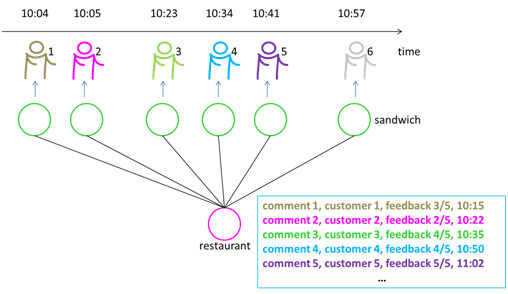
Figure 2: Feedback not connected to customer’s interaction with the company, expressed some time after interaction
And in the target model each interaction with company can be evaluated and this rating is clearly connected with this interaction. In particular the customer who did not interact with company should not have the possibility to evaluate. It is important however to distinguish two types of interactions. The customer who did not order the spaghetti should not evaluate the taste of it. The customer, who did not use the toilet in the restaurant because it was closed, of course can evaluate such a situation but cannot evaluate the cleanness of the toilet.
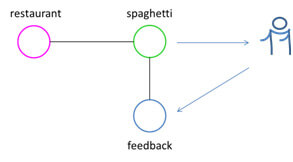
Figure 3: Feedback connected to customer’s interaction with the company (interaction based on the product offered by the company, so the feedback is connected to the product)

Figure 4: Feedback connected to customer’s interaction with the company (interaction based on the services offered by the company, so the feedback is connected to the element of the service)
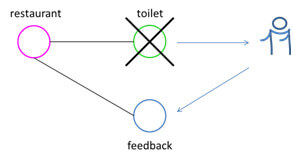
Figure 5: Feedback connected to customer’s interaction with the company (interaction based on the company, so the feedback is connected to the company)
Let’s imagine the café in which sandwiches that consists of baguette, cheese, ham, tomato and mayonnaise are offered.
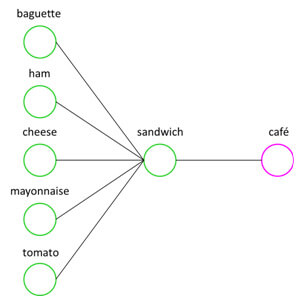
Figure 6: Sandwich that consists of baguette, ham, cheese, mayonnaise, tomato
The customer may evaluate the whole sandwich (appearance, taste, smell) but also may take particular ingredients into account (appearance, taste, smell, freshness, consistency). In the case of baguette the most important aspect could be its crunchiness and in the case of tomato its succulence. Of course the process of making sandwiches is more complex. Inside baguette we put not the whole tomatoes, ham and cheese but slices of them.

Figure 7: Sandwich that consists of a part of baguette, a slice ham, a slice cheese, a portion of mayonnaise, slices of tomato
As a result in the tree of the sandwich we put intermediate layer – portions. These portions can also have some qualities which could be evaluated – amount of mayonnaise, thickness of tomato, ham, cheese slices, size of the part of baguette (e.g. it could be too small comparing to other sandwiches). According to this approach we could treat baguette as a result of the combination of ingredients: flour, water and yeast. Flour can be treated as a result of grinding wheat. Wheat can be treated as a result of wheat growing etc. It is worth noticing that one employee of a café can make sandwiches, the other one can slice ingredients, some suppliers provide ingredients, and the bakery provides baguettes.
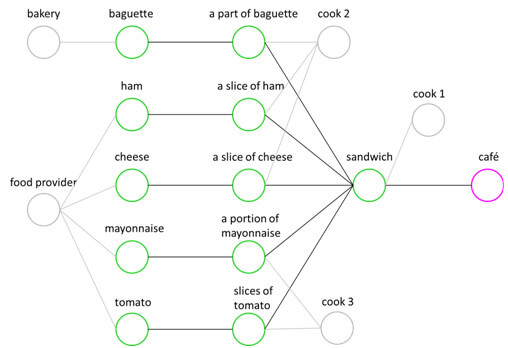
Figure 8: Sandwich and subjects / employees responsible for particular activities
And when we look at the bigger picture of such a network of cafés we will see the graph of several objects and connections between them.
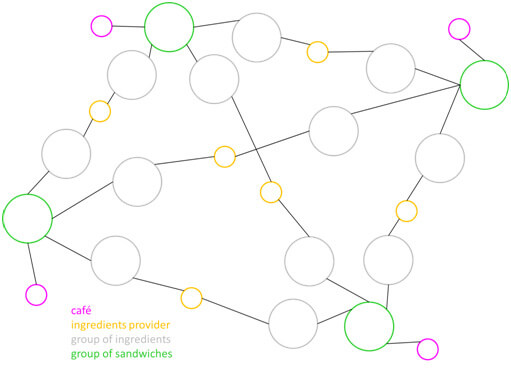
Figure 9: Big picture of the network of cafés presented in the graph
Supply chain as a source of information about the creation of the product or service
We cannot expect that a customer who eats a sandwich will have remarks regarding wheat or yeast used to bake the baguette, from which the sandwich was made. It is still possible that the customer could be well informed about the key information regarding the origin of the ingredients and also their characteristics (customer preferences, allergens etc.), nourishing composition (fats, proteins, carbohydrates etc.). For some customers it could be important to know what kinds of processes were used to make a sandwich. Cooking seems to be neutral but frying, smoking not necessary.
The supply chain of such a sandwich can be complex but with due diligence it should not be difficult to get to know what subjects and people were participating in specific stages. In particular it would be relatively easy to address the frequently occurring problem of too thick slices of cheese or unpalatable cheese in sandwiches but more difficult it would be to address the problem of the freshness of the sandwich as such.
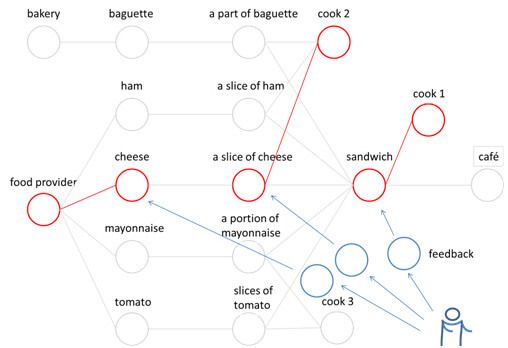
Figure 10: Feedback from the customer addressed to the actors in the foodchain responsible for evaluated elements

Figure 11: Example of feedback answers
It could happen that the sandwich was made of fresh ingredients, but it was sold after 2 days, and it could also be that the sandwich was prepared on the same day that it was sold, but the baguette was stale. It could also happen that the customer bought a fresh sandwich, but ate and evaluated it after 2 days. In the first case the evaluation should be addressed to the right actor in the supply chain who is responsible for this particular café – sandwiches should not be sold after so many days. In the second case, probably the employee preparing the sandwiches should have noticed that he is using stale bread and the customerʼs rating should be sent to her/him (the employee could also give feedback by herself/himself and it would probably go to the bakery or bread supplier). In the third case the rating from the customer could be ignored provided that we are sure that the sandwich was consumed soon before the evaluation, not 2 days earlier. Different types of food / beverages have different expiration periods – feedbacks after expiration should not be taken into account. The taste of the sandwich can also be influenced by the quality of service by the seller, the way in which he served the sandwich, paradoxically even whether the customer managed to pay by card, the seller smiled, the customer waited a long time for purchase and whether he had comfortable conditions for consumption.
Analogously to sandwiches we could look at the café itself. Just as the sandwich consists of ingredients, which are made from other ingredients, and each of them could have been prepared by different people responsible for assigned to them tasks (preparation of sandwich, slicing, baking, frying), so the café consists of the rooms, tables, chairs, toilets etc. Each of the rooms consists of the ceiling, floor, walls, objects and devices. In fact each physical object that is part of a larger whole can be taken into account – even such physical aspects of the restaurant like the air or sounds. All of these objects are subject to more or less conscious evaluation. And also here each feedback can be addressed to actors responsible for a particular aspect – one person is probably responsible for the cleanness of the toilet, one another for interior design.
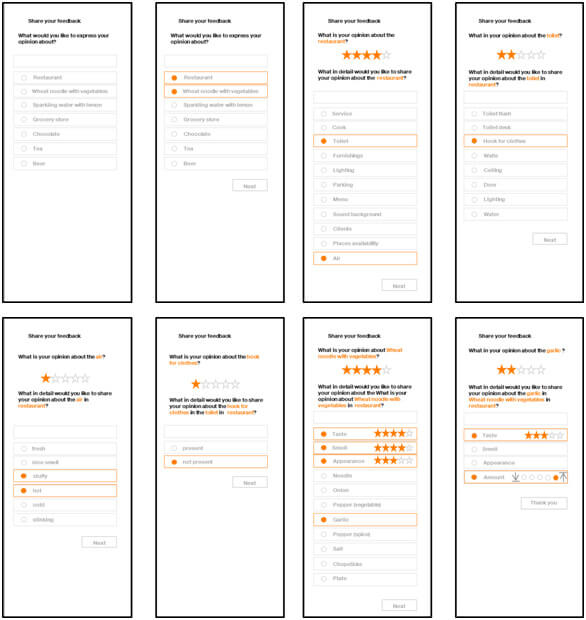
Figure 12: Example of the feedback interface
The customer enters the café and immediately feels that this is a place for her/him and when asked for feedback she/he could give without hesitation 5 stars. Another customer in the same café can give only 2 stars. Quite objective aspects like freshness of the air, noise, the efficiency of a hand dryer are subjects to evaluation. But also such issues like: whether it is a comfort place to work for some hours, or is it a place for the first date etc. What is more the same place during rush hours is not suitable for work because of the noise, lack of seats and it takes long to order coffee, and after rush hours it is quite opposite. Some other problem is that one works perfectly in the complete silence, when some other people need some amount of stimulation (bustle of coffee conversations, music etc.). The place for the first date looks quite different for 20-year- and 50-year- old customer.
Why feedback currently does not work?
Many answers for such questions are currently accessible in numerous websites dedicated to travel, hotels, restaurants but also to other industries. Each subject receives averaged evaluation (sometimes of contradictory ratings) enriched by hundreds of comments. Customers have full freedom of expression because they answer open-ended question “what do you think about the restaurant/hotel?” However, it is impossible to make a factual analysis of the situation in a given hotel restaurant for several reasons:
- feedback is most often given by people who are particularly dissatisfied / satisfied,
- most people do not give feedback at all,
- even if one customer is not satisfied, it can be difficult to get to know what was the reason of her/his dissatisfaction (the customer can even not know, who was the seller, who was the cook or who was cleaning the room),
- incidents happen, the company should react thanks to feedback on systematically repeated problems affecting the customers’ evaluation – only statistically large number of feedbacks of particular type should be solved by organized hotel’s reaction.
To some extent, customer satisfaction analysis can be provided by artificial intelligence (natural language processing – NLP, in particular sentiment analysis, searching for semantically compatible sentences [1]). These are more advanced solutions, but still imperfect (susceptibility to malicious actions in social media, support of various languages, incorrect reading of irony expressed by customers). In addition, the sentiment analysis will not be able to determine the cause of the stale tomatoes in the sandwich, if the customer will not indicate it in the comment – how would she/he know?
How to create a sense of effectiveness in the customers?
The proposed solution assumes that the customer instead of writing comments, will be answering the selected by her/him close-ended questions concerning particular aspect of the hotel, restaurant, hotel room, breakfast, bread served for breakfast etc. Because there will be even thousands of such questions it is important to provide a tool that will support selection of the right questions. The customer can choose first the object being evaluated and then the question. Suggested questions can be based on several criteria:
- history of customer’s transactions/orders in grocery stores, restaurants, cafés, etc.,
- history of customer’s visits at grocery stores, restaurants, cafés etc.,
- products that were available in the grocery stores visited by the customer, but were not purchased by her/him because of visibly low quality, bad label, bad information etc.,
- customer’s profile (preferences, habits, especially in the context of giving feedback),
- the structure of objects (e.g. hotel à restaurant à table à cleanness of the table)
- the most frequently used question,
- the most frequently used question on this time of the day concerning this particular object,
- the most frequently used question among people similar to the customer,
- the most frequently used question among people eating the same etc.
After completing responses concerning the most crucial problems according to the customer we could ask some other questions as well. The goal is to gather large numbers of answers that will allow us to statistical inference. Customers who did not decide to give feedback can be asked at least one question (in this case it is very important to choose the right moment to ask this question – to maximize the probability of response). The question we could ask could cover:
- the most problematic area (many negative feedbacks),
- the most controversial area (many contradictory answers),
- the issue most frequently raised by the group of customers similar to the one that is being asked,
- question selected to have knowledge about the issues that maybe are not important to the customers but are important to the company (e.g. because these issues generate costs) – these questions will be asked to customers who are willing to answer them (based on their previous collected feedbacks) and in case of lack of such customers – all other questions will be randomly assigned.
Customers for sure will still write comments, but customers of the companies which base their business decisions on the collected quantitative data, will have sense of effectiveness thanks to answering close-ended questions as well. The set of close-ended questions should be step by step increased based on the issues raised in the comments. It is also worth to take into account the possibility to let the customers create their own close-ended questions. The use of artificial intelligence techniques [1] may be necessary here to join questions (and answers) that have similar semantic meaning. The proposed solution is not against data mining, NLP techniques – is rather a frame in which some subtasks could be done by these techniques. Theses subtasks will be relatively simply defined and thanks to this the techniques will be better addressed – there, where the technique was supposed to be good at assumption. Such subtasks could be for example suggesting questions that are more likely to be answered by the customer based on information regarding who the customer is, what kind of products he ordered, what kind of questions he was answering in the past etc.
“Tomorrow is today, but tomorrow” (Sławomir Mrożek)
Why all this? Because life is not about doing shopping, life is about living. The following list presents potential features of future solutions that could be enriched by information gathered in feedbacks and preferences from the customers and by analysing customers’ habits.
1. When I want to read an article in social media, maybe the one which concerns topics I usually like to discuss could be proposed to me based on my evaluations of particular paragraphs of previously read articles?
2. When I choose the hotel for my holidays maybe the one which was positively evaluated by people like me could be suggested?
3. When I go for a first date maybe the restaurant which was positively evaluated by people similar to me and my partner could be suggested?
4. If every day we buy two favourite ham and cheese sandwiches, we drink three coffees (single espresso, without sugar), once a week we eat spaghetti in our favourite restaurant, once a month we buy washing powder from the same brand for years, and when we are going on holiday, we do not want a room with a view of a busy street, when we eat a salad it cannot contain coriander, and nuts we change into beans, maybe some of our purchases / orders could be done (half) automatically?
5. When we search for something new, maybe we could have a prompted product not based on what other people like me usually choose, but rather based on what other people like me usually evaluated positively?
6. When I buy a new smartphone, and I always buy the best smartphone on the market from a particular brand, and this time such a smartphone model has very bad evaluations among people like me, maybe I could receive the recommendation of a smartphone from another brand, which has good feedbacks from people like me?
7. When being on my holidays for the first time in other part of the world, when visiting the café, after giving the owner (digital) permission to my habits of drinking coffee, she/he could ask me immediately after “good morning” the question: “Espresso without sugar, like usual?”
8. When I buy a new car, maybe I would like to buy a model which very seldom breaks down?
9. When I read a restaurant menu, day after my doctor informed me that I should limit mu cholesterol, maybe the (digital) menu could highlight low fat level meals, without ingredients I have allergy for and the ingredients I do not like would be replaced by the ones I like?
10. If I buy a product, which was withdrawn from sale because of its defect, maybe I could be directly informed that there is such a product in my fridge?
11. When I buy something new, maybe I would like to get to know what people who are important to me choose?
12. When I enter my apartment maybe I would like to have air humidity and temperature I prefer at this month of the year (based on my previous feedbacks)?
13. When most café customers some hours after consumption of one of the cake feels very bad, maybe the service in the café could earlier withdrawn this cake from the sales?
14. When in a hurry we come back from the trip and would like to eat something healthy and tasty, and when going with our bags in hands and we would like to be on time at the train station, maybe someone could advise us about the restaurant which offers today meals that meet expectation of all members of our group and what is well evaluated by people similar to us?
15. When it is important, from where the ingredients of our meal come from, maybe we could automatically select only these meals/products that have their origin in the local market?
16. When I want to change the job maybe it would be easier if I was suggested job offers in teams in which people like me feel fulfilled.
17. When I have to see a doctor maybe the one who was positively evaluated by patients having the same disease could be suggested?
In all this reading in mind it is important to inform the customer why such recommendation was made. Rules that were used should not be the result of artificial intelligence oracle, the customer has right to get to know these rules, and base on what such a decision was made. System could work for various entities, by offering API that allows collecting feedbacks about the products or services, or information about these products or services, their labels, advertisements in the whole customer journey – from getting acquainted with the offer on the Internet, on the billboard or leaflet, through the order placing, delivery and ending using the product or service. Subjects being evaluated could thanks to such solution improve the quality of their products or services, plan new products or services, prepare information campaigns better, and get knowledge about it how they are perceived by their customers, and complete the knowledge about their potential and finally to communicate it outside the company. And through continuous improvement of quality they would obtain a more intelligent system that loyalizes customers.
The base for the proposed solution can be Thing’in platform [2]. It enables collecting of information about physical objects (of the companies, hotels, restaurants, their products and services) from the reality that surrounds us, as well as providing information on where the data can be read (feedback) about these objects.
Conclusions
If during the reading of this article you had some connotations to Kaizen philosophy or DevOps practices, it is a proper association. Feedchain is an approach that supports continuous improvements by providing possibility of scalable monitoring based on simplified feedbacks in the world of online food/products ordering and delivering companies, networks of hotels, restaurants, grocery stores, and other companies that provide goods thanks to complex supply chains. By conversion of traditional feedbacks expressed in comments into quantitative data Feedchain allows firstly to analyse the state of the supply chain in a relatively easy way, secondly to support business decisions based on statistically significant conclusions from feedbacks, thirdly to address significant feedbacks automatically to the right actors responsible for causing the problem and finally to make the improvement in the supply chain. All of these five steps are repeated indefinitely and provide continuous improvements.








